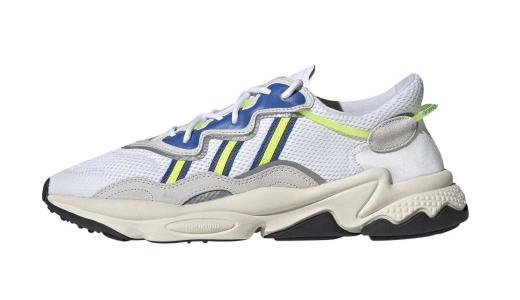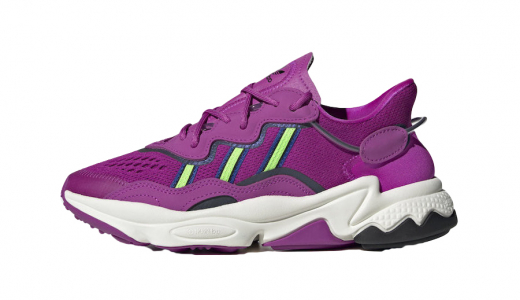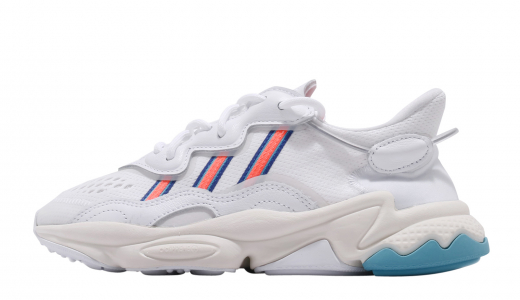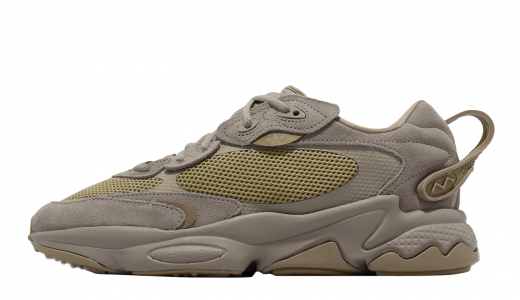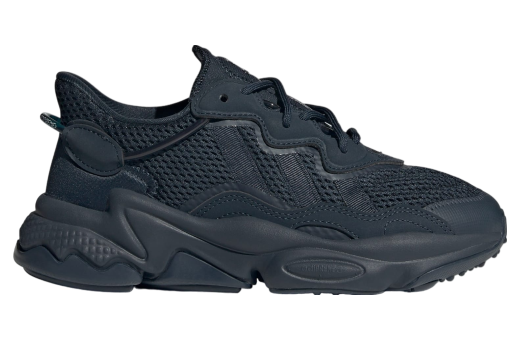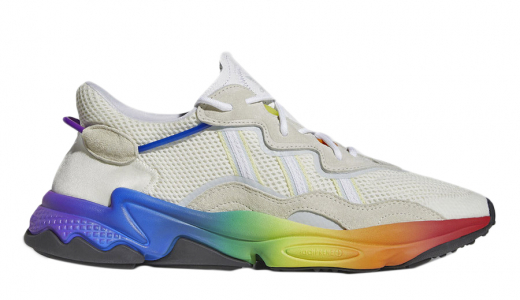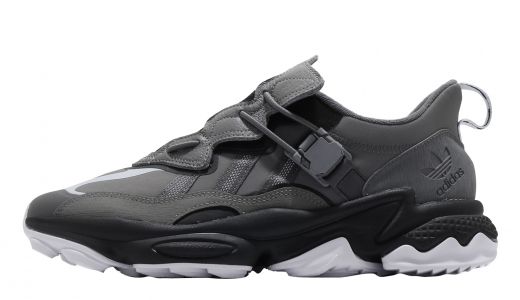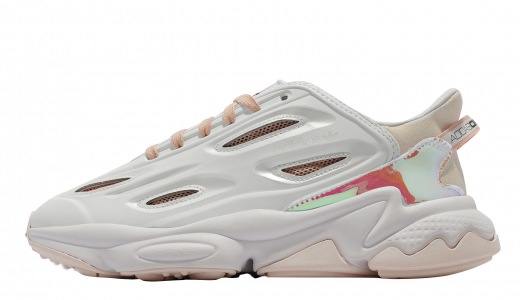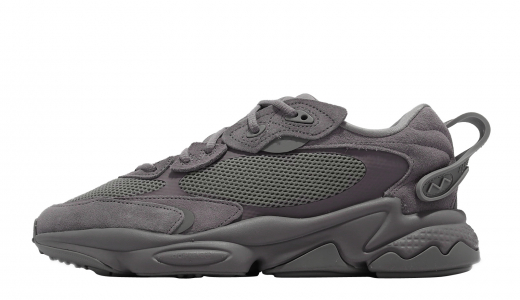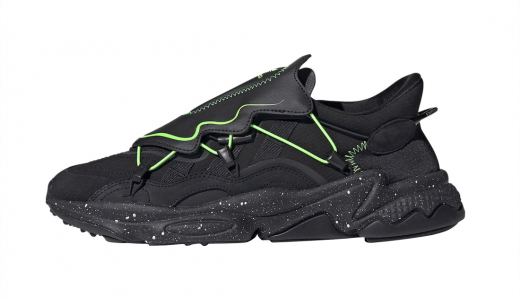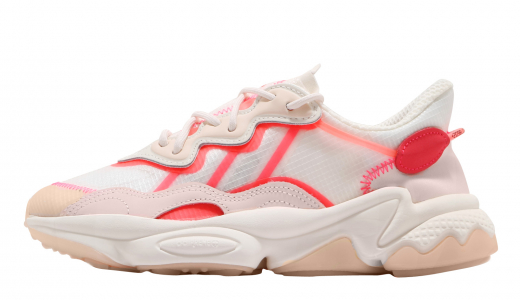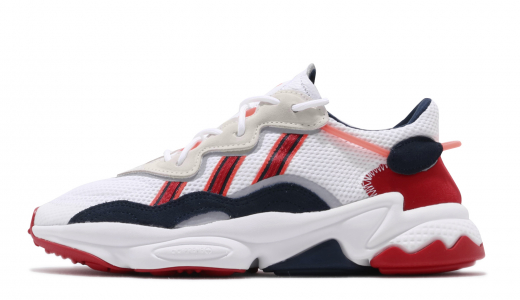Adidas Ozweego
The adidas Ozweego is a striking silhouette that embodies the fusion of modern technology and retro design. Originally introduced in the late 1990s, the Ozweego quickly became known for its avant-garde aesthetics and innovative features. The contemporary iterations of the Ozweego continue to honor its heritage while integrating advanced materials and cutting-edge technology. Enhanced cushioning, reflective details, and a blend of mesh and suede uppers contribute to both comfort and style, making the sneaker not just a fashion statement but also a performance-oriented footwear option. The design is characterized by its distinctive, chunky midsole and fluid lines, which resonate with the current trend of 'dad sneakers' and retro-inspired fashion.
In addition to its functional attributes, the adidas Ozweego has cemented itself within various cultural spheres, from streetwear to high fashion. Frequent collaborations with designers and artists provide fresh, limited-edition takes on the iconic sneaker, keeping it relevant and highly sought after. Its versatility allows it to be paired seamlessly with a wide array of outfits, from athletic wear to casual everyday looks. The Ozweego's blend of nostalgic elements and futuristic details has earned it a unique place in the footwear market, appealing to both long-time sneaker enthusiasts and a newer generation of style-conscious consumers. Through its evolution, the adidas Ozweego remains a testament to the brand's commitment to innovation, style, and functionality.
History of Adidas Ozweego
The History of adidas Ozweego: An Evolution in Footwear
Origins and Early Years
The adidas Ozweego is a distinctive and influential line within the expansive history of adidas' footwear offerings. The Ozweego's journey began in the 1990s, a period characterized by significant innovation and experimentation in sneaker design. The original adidas Ozweego, first released in 1996, was conceived as a running shoe, aimed primarily at athletes and fitness enthusiasts who required high-performance footwear.
The 1990s were a transformative time for the sneaker industry. Technological innovations and bold aesthetic choices defined the era, and the original Ozweego fit right into this context. It featured state-of-the-art cushioning technology designed to provide superior comfort and impact absorption. This included the use of Adiprene, a material that became a hallmark of adidas running shoes, known for its shock-absorbing properties that provided relief to long-distance runners.
The design of the early Ozweego models emphasized functionality with a somewhat understated aesthetic. The lightweight mesh upper provided breathability, making it ideal for prolonged athletic activities. During this period, adidas focused heavily on performance, so the early Ozweego's primary appeal was to runners and other athletes.
Evolution in the Late 1990s and 2000s
As the late 1990s and early 2000s rolled in, the landscape of sneaker culture began to shift. The rise of streetwear and the fusion of athletic and casual fashion started to take hold. Brands like adidas recognized that their consumer base was broadening; sneakers were no longer just for athletes but were becoming staple items in everyday wardrobes.
In response to this transformation, adidas began updating its classic models to cater to this growing market. The Ozweego line was no exception. Throughout the early 2000s, the design of the Ozweego began to incorporate more trendy elements while retaining its core functionality. Iterations like the Ozweego 2 and Ozweego 3 showcased these changes by integrating more stylish overlays, a variety of colorways, and updated materials. These models started to blur the lines between performance footwear and streetwear.
The Raf Simons Collaboration and the Revival of the Ozweego
A pivotal moment in the history of the adidas Ozweego came in 2013 when Belgian fashion designer Raf Simons collaborated with adidas to reimagine the sneaker. This partnership breathed new life into the Ozweego, cementing its status as a classic silhouette with a contemporary edge.
Raf Simons, known for his avant-garde approach to fashion, took the fundamental design of the Ozweego and injected it with bold aesthetics and a futuristic sensibility. Dubbed the Ozweego 1, this version featured exaggerated proportions, vibrant colorways, and a unique play on textures. It was a dramatic departure from the Ozweego's origins as a performance sneaker, now fully embracing its potential as a fashion statement.
The collaboration was an instant success, captivating both fashion enthusiasts and sneakerheads. The Raf Simons Ozweego became a symbol of high fashion meeting street culture, and its influence can be seen in the broader trend of luxury sneakers that proliferated in the years that followed. The success of this partnership led to several subsequent releases, each building on the last in terms of design innovation and aesthetic appeal.
Technological Innovations and Modern Versions
While the Raf Simons collaboration marked a significant stylistic evolution, adidas continued to innovate on the technical front. The Ozweego line benefited from advancements in materials and cushioning technologies that the brand developed throughout the 2010s.
In 2019, adidas reintroduced the Ozweego with a modern twist, blending nostalgia with contemporary flair. This new iteration, often referred to simply as the Ozweego, took design cues from its 1990s predecessors but updated them for the present day. Key features included an adiPRENE+ midsole, which offered enhanced comfort and cushioning, and a lightweight EVA outsole that provided durability and improved traction. The design included TPU overlays for support and a mix of mesh and suede materials, creating a layered, textured look that resonated with modern sneaker culture.
This revitalized Ozweego found a receptive audience among both longtime fans of the brand and new consumers discovering it for the first time. The blend of retro and modern elements made it versatile enough to appeal to a wide demographic, from sports enthusiasts to fashion-conscious individuals.
Cultural Impact and Legacy
The adidas Ozweego's journey from a functional running shoe to a fashion-forward sneaker is a mirror to the broader changes in sneaker culture over the past few decades. Originally designed with performance in mind, the Ozweego has evolved in sync with shifts in cultural tastes and fashion trends.
The Raf Simons collaboration played a crucial role in this transformation, highlighting how collaborations between sportswear brands and high-end designers can result in groundbreaking products. The partnership not only elevated the Ozweego but also set a precedent for future collaborations in the industry, influencing how brands approach design and market their products.
The Ozweego has also become emblematic of the 90s revival trend that has permeated fashion in recent years. The sneaker taps into nostalgia while also feeling fresh and relevant, making it a staple in the wardrobes of those who appreciate vintage aesthetics without sacrificing modern comfort and performance.
Moreover, the Ozweego's legacy is seen in how it has influenced other sneaker designs within the adidas portfolio and beyond. Elements like exaggerated proportions, mixed materials, and a focus on both form and function have become more prominent in sneaker design, partly attributable to the success and influence of the Ozweego line.
Conclusion
The adidas Ozweego's history is a testament to the brand's ability to adapt and innovate over the years. From its origins as a technical running shoe in the 1990s to its transformation into a fashion icon through strategic collaborations and modern reinterpretations, the Ozweego has continuously evolved to meet the changing tastes and needs of consumers.
Today, the Ozweego stands as much more than just a sneaker; it is a cultural artifact that encapsulates the dynamic interplay between sports, fashion, and technology. Its enduring popularity is a reflection of adidas' commitment to pushing the boundaries of design while remaining true to the brand's storied heritage. As sneaker culture continues to evolve, the Ozweego is poised to remain a significant and influential silhouette in the years to come.

